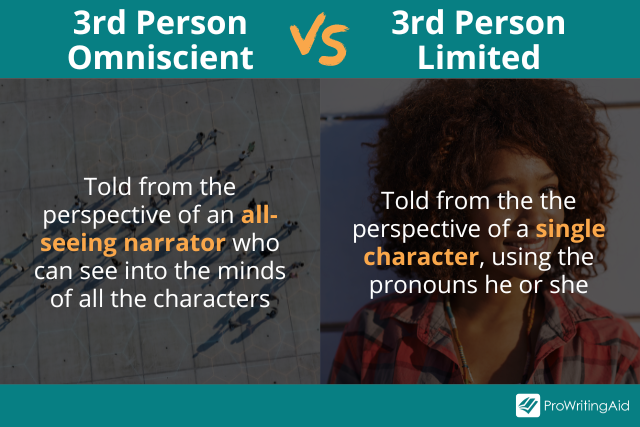What Is Third Person Point Of View Omniscient
What Is Third Person Omniscient Point of View The third person omniscient point of view is the most open and flexible POV available to writers As the name implies an omniscient narrator is all seeing and all knowing Third person omniscient point of view is a third-person literary perspective that offers omniscient insight into one or more character's minds. Third person omniscient point of view is used to shine an all-seeing eye on a story's character (s) and world. Why Write in Third Person Omniscient Third person limited vs. omniscient

In short the third person point of view is when the narrator the writer refers to events from the outside To do so he she they or names are used to refer to characters Have a look at the following example Third person omniscient is perhaps the oldest narrative form of recorded storytelling, used by our ancestors to tell the tales of Odin, Heracles, and Amun-Ra. Let's look at why storytellers across time love it so much, and what makes this point of view so powerful. Omniscient narrators can read the characters' thoughts
:max_bytes(150000):strip_icc()/third-person-omniscient-point-of-view-1277125-v4-5b87078946e0fb0025390fa6.png)
What Is Third Person Point Of View Omniscient
The third person omniscient point of view is a method of storytelling in which the narrator knows the thoughts and feelings of all of the characters in the story The third person is not the same as the third person limited a point of voice that adheres closely to one character s perspective usually the main character s Point of view part i first second and third person video . Tracey anne s blog third person omniscient writingThird person point of view what is it and how do i use it 7esl.

PPT Review For The Reading SOL PowerPoint Presentation ID 5344674

Point Of View What Is It With 1st 2nd 3rd And 4th POV Examples
What is Third Person Omniscient In third person omniscient the narrator acts as an all seeing eye It s not limited to one character s POV which opens up a lot of possibilities but can also limit intimacy between the reader and characters The omniscient PoV is typically divided into two categories: objective (also known as the "dramatic" PoV or "fly on the wall" PoV), and subjective. An objective omniscient PoV is when the narrator doesn't have a "voice". The narrator is present, but they're "invisible"; they don't have a personality.
A third person point of view is a narrative perspective in which the writer doesn t directly refer to themself as the narrator nor you as the reader The third person POV is arguably the most popular storytelling perspective The three primary points of view are first person, in which the narrator tells a story from their own perspective ("I went to the store"); second person , in which the narrator tells a story about you, the reader or viewer ("You went to the store"); and third person , in which the narrator tells a story about other people ("He went to the store").